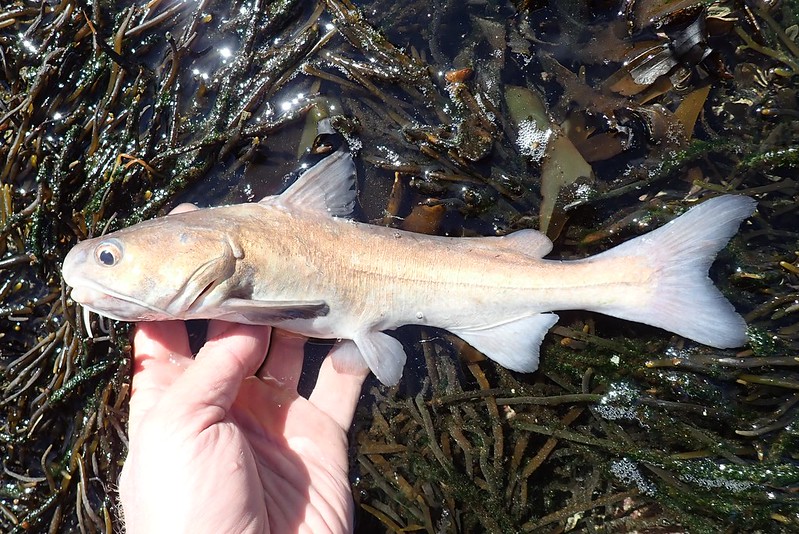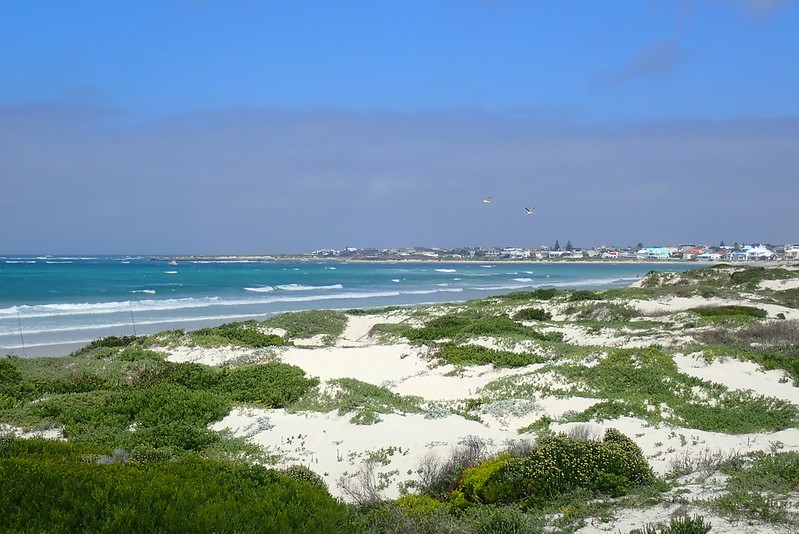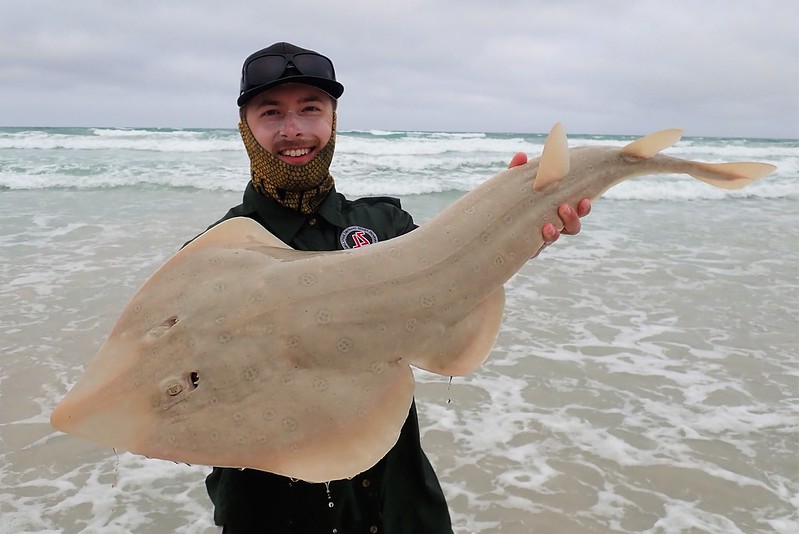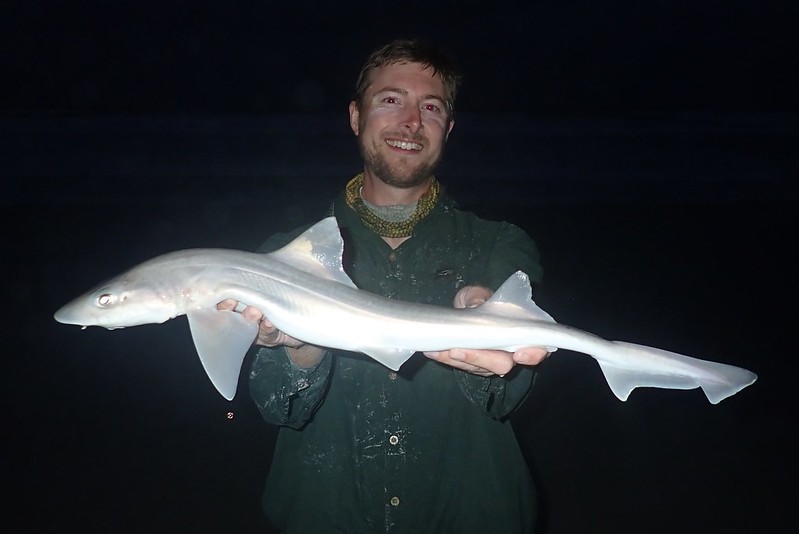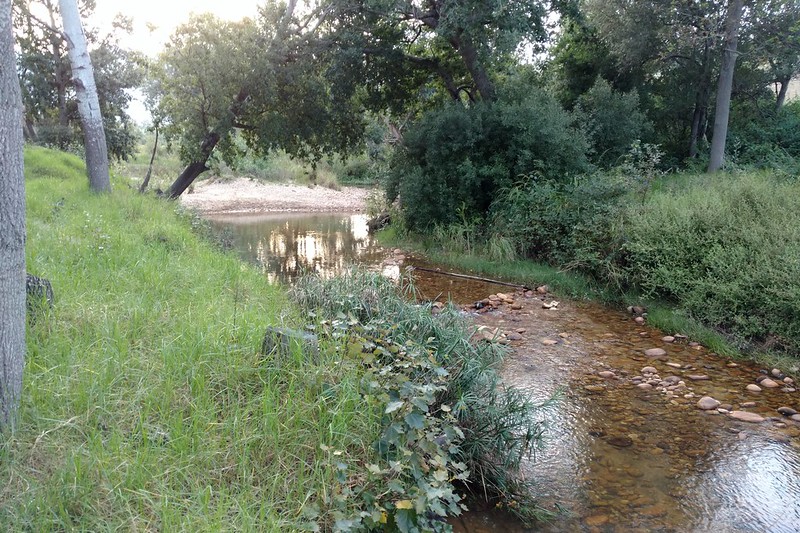
Xander took us west to fish a rocky cove on the edge of town. We went back and forth between the two oceans, and this time we were starting off in the Atlantic. We soaked baits for sharks, and while we waited I microfished the tidepools. New species were getting harder to come by though, with most of the fish being either banded gobies or super klipfish.
Banded Goby (Caffrogobius caffer)

Super Klipfish (Clinus superciliosus)

We told Xander we were interested in more of the small endemic sharks like the spotted gully shark and various shysharks. This was supposed to be a good spot for them, but again the bite was slow. Josh caught one new species of shyshark, but I didn't get any bites.

As the tide was coming in I noticed a fish in the tidepool to my right that looked different from the klipfish. It was a picky eater, but a freshly cracked mussel was too tempting. I caught my first lifer of the day, a redfingers. They're called redfingers because the extended pectoral fin rays turn red on bigger individuals, but the ones on mine were mostly white.
Redfingers (Cheilodactylus fasciatus) - new hook & line species #638

Josh had a shot at a redfingers as well, but after trying for a few minutes it was time to pack up and head to the next spot. When he gave up I cracked open a new mussel, put on a fresh piece of bait, and caught the second one. I am a huge jerk, and Josh will never let me forget it! Changing topics though, here is a cool coastal flower we saw.

We headed back towards town for our next spot. I honestly can't remember if it was in the Atlantic or Indian Ocean, which is a statement that only makes sense if you're fishing in Struisbaai. We fished from the rocks again, but this time the bottom was mostly sandy. The clock was ticking with the incoming tide and crashing surf threatening to push us off the rocks.

Once again the sharks didn't show up, but I did feel small taps on my line. Whatever it was didn't have a big enough mouth to take in the bait whole. After failing to hook whatever it was a dozen times, I finally succeeded and pulled in another species of seacatfish. As a shark fishing guide Xander hoped we wouldn't post these, but guess what... a new species is a new species, so here it is. Sorry Xander!
White Seacatfish (Galeichthys feliceps) - new hook & line species #639
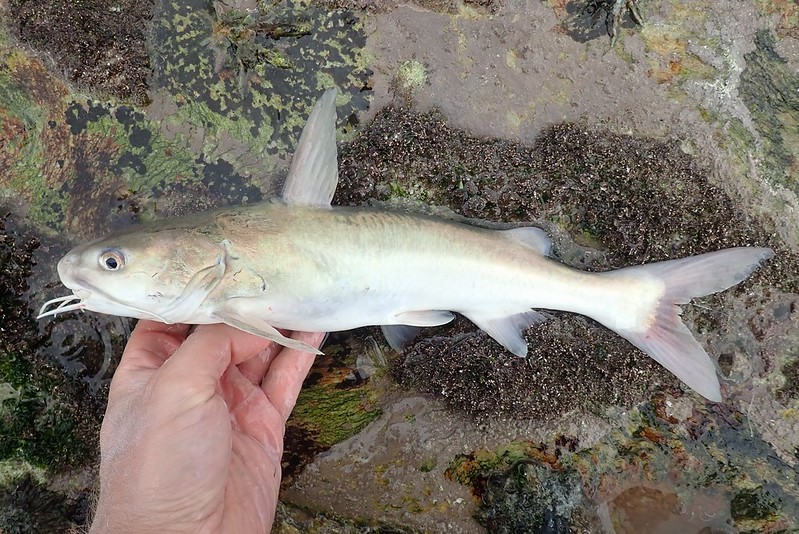
The incoming tide chased us off the rocks, so we took a break and had lunch at a fish 'n' chips place. The portions were so big, and the food was so greasy that it was honestly difficult to stand up after we finished. In the afternoon we went back to the same beach (definitely the Indian Ocean) where we caught the ragged tooth sharks. The water was more turquoise than the day before, and Xander declared that it looked like good hammerhead conditions.

Apparently Xander knows his stuff, because my first bite was none other than a small hammerhead, the perfect size for a quick photo and release. This same species of hammerhead shows up in San Diego during El Nino years, but they're typically around 10 feet, so I'm extremely relieved that I don't have to think about catching one now.
Smooth Hammerhead (Sphyrna zygaena) - new hook & line species #640

Josh quickly caught a hammerhead as well, but unfortunately it was foul hooked on the head. He debated on whether or not to count it, but what he really wanted was to catch another one that was fair hooked. Several hours later he got one, and I could tell he was immensely relieved. I may have caught one or two lesser guitarfish, but mostly it was a steady stream of smoothhounds.
Smoothhound (Mustelus mustelus)

We didn't have any big sharks this time, but we got a good workout after dark when a butterfly ray took Josh's bait and then got tangled up in my line. We reeled it in together, but we weren't sure who's fish it was until we had it on the beach. Fortunately it was the same species I caught in Durban Harbor, and since it was Josh's bait in its mouth he could count it as his catch. It was huge too, easily over 200 lbs!

The next morning we had a few bonus hours to fish before we needed to drive back to Cape Town. Xander gave us the options of trying for sharks again or species fishing an estuary a short drive from Struisbaai. We went with the latter.

We walked the shoreline of the estuary and threw small shiny lures. After a few missed bites, I hooked up with one of the small leerfish that was chasing bait fish. Also called garrick, they get much larger than this, but as we keep saying, a species is a species. After that I spent the remaining time fishing bait, which resulted in another white seacatfish and a handsome white steenbras, my last new species of the trip.
Leerfish (Lichia amia) - new hook & line species #641

White Seacatfish (Galeichthys feliceps)

White Steenbras (Lithognathus lithognathus) - new hook & line species #642

Xander took us back to the rental house where we packed our luggage, said our goodbyes, and then drove our rental car back to Cape Town to catch our flights. I headed to Johannesburg first, then had an international flight to Atlanta, and finally flew back to San Diego the following morning.

I want to give a huge thanks to Xander for making all the arrangements for our stay in Struisbaai and putting us on some really cool fish. It was an awesome end to our trip. I ended up adding 67 new species to my list, including some very memorable ones like the tigerfish and the ragged tooth shark. We did a good mix of guided and DIY fishing. Of course it would have been cool to discover more on our own, but we did the best with the time we have. Thanks again to Josh, Eli, and Ken for being such good travel and fishing companions. And to everyone who made it through all 10 blog posts, thanks for reading!





